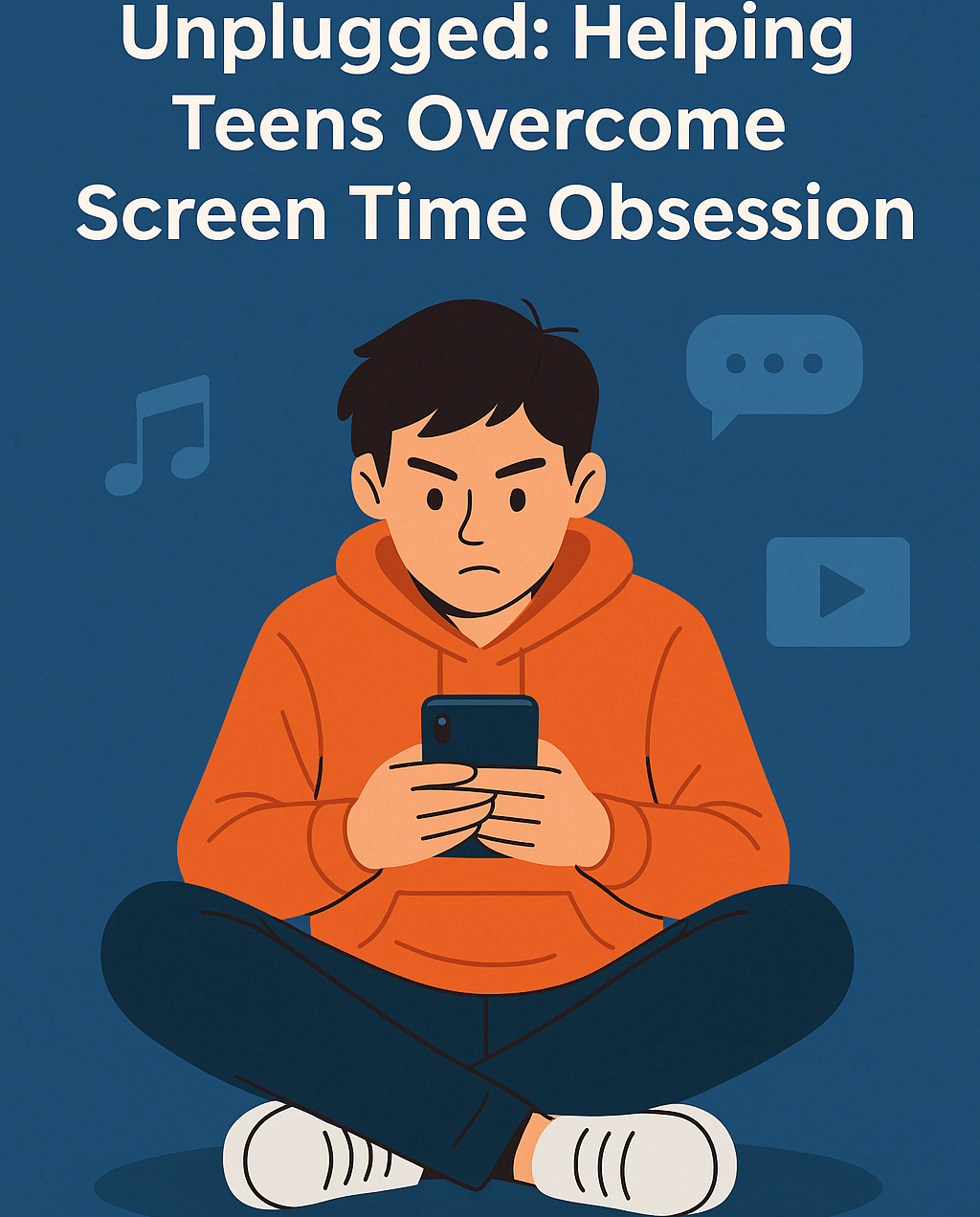In today’s digital-first world, it’s no surprise that teens are glued to their screens more than ever. Whether it’s for school, socializing, entertainment, or gaming, screens have become an essential part of their lives. However, when screen time begins to replace sleep, exercise, real-world interaction, and even mental well-being, it’s time for a digital reality check. In this post, we’ll explore how families in the U.S. can help teens overcome screen time obsession with actionable, human-first strategies.
The Growing Concern: Why Teens Need to Overcome Screen Time Obsession
According to a 2023 Common Sense Media report, U.S. teens spend an average of over 7.5 hours per day on screen-based entertainment. That’s not counting screen time spent on schoolwork! The increase in digital consumption has led experts to raise alarms about its impact on teen development and mental health.
Physical Health Risks
Prolonged screen time is linked to poor posture, eye strain, disrupted sleep cycles, and increased risk of obesity. The sedentary nature of digital entertainment encourages inactivity and can contribute to long-term health consequences.
Mental Health Impacts
Excessive screen time has been associated with rising levels of anxiety, depression, and low self-esteem in teens. According to the Mayo Clinic, digital overload can disrupt emotional regulation and sleep hygiene, both critical during adolescence.
Academic and Social Impacts
Multitasking with screens during homework can reduce academic performance. Additionally, virtual connections often replace in-person interactions, leaving teens socially disconnected in real life.
6 Actionable Tips to Help Teens Overcome Screen Time
Helping teens overcome screen time obsession requires more than restrictions. It calls for understanding, communication, and collaboration. Here are six realistic, parent-approved tips:
1. Create a Family Media Plan
The American Academy of Pediatrics recommends developing a family media plan that outlines screen-free zones, designated tech hours, and daily screen time limits. Include your teen in this conversation to make them feel empowered rather than restricted.
- Why it works: It sets clear expectations and encourages mutual respect for screen time boundaries.
- Tool tip: Use HealthyChildren.org’s Media Plan Tool to get started.
2. Designate Screen-Free Zones and Times
Make specific areas of your home (like the dinner table or bedrooms) tech-free. Similarly, establish screen-free times such as during meals or the hour before bedtime.
- Why it works: It fosters connection and promotes better sleep.
- Pro tip: Replace screen time before bed with family reading time or light stretching to wind down.
3. Encourage Offline Hobbies
Support your teen in discovering or rekindling non-digital interests. Sports, art, music, and outdoor activities can serve as powerful alternatives to screen-based recreation.
- Why it works: These hobbies offer physical, emotional, and social benefits that screens simply can’t.
- Support it: Provide resources, supplies, or enroll them in local classes or clubs.
4. Be a Digital Role Model
Children often mimic adult behavior. If parents are constantly glued to phones, it becomes harder to enforce healthy limits for their teens.
- Why it works: Modeling mindful tech use encourages your teen to mirror those behaviors.
- How to do it: Limit your own recreational screen use in front of your kids. Opt for shared activities instead.
5. Use Parental Control Apps Strategically
Tools like Apple’s Screen Time, Google Family Link, and third-party apps like Qustodio can help you monitor and manage your teen’s device usage without being invasive.
- Why it works: It reinforces boundaries without resorting to micromanagement.
- Tip: Always discuss the purpose of these tools with your teen to build trust.
6. Open the Lines of Communication
Talk to your teen about the emotional and physical consequences of screen overuse. Instead of shaming or lecturing, create a dialogue that invites honesty and empathy.
- Why it works: Understanding their screen habits helps you guide—not dictate—their decisions.
- Question to ask: “How do you feel after spending hours on your phone? Tired? Drained? Happy?”
Spotting the Signs of Screen Addiction
Not all screen time is harmful, but here are a few red flags that may signal a deeper issue:
- Mood swings when screens are taken away
- Withdrawing from social or family events
- Falling grades or sleep issues
- Obsessive thinking about the next screen session
If these signs persist, consider consulting a pediatrician or therapist for additional support.
The Role of Schools and Communities
Communities can play a big role in helping families overcome screen time obsession. Schools can implement screen-free breaks and offer tech-free extracurricular activities. Libraries and recreation centers can also host workshops on digital wellness.
FAQs on How to Help Teens Overcome Screen Time
What’s a healthy amount of screen time for teens?
Experts recommend no more than 2 hours per day of recreational screen time, not including educational or work-related use.
Should screen time rules be different for weekends?
A: A little flexibility is fine, but maintaining consistency helps form good habits.
Are some types of screen time more beneficial?
Yes. Creative and educational uses (like coding, design, or learning apps) are more enriching than passive scrolling or binge-watching.
What should I do if my teen resists screen time rules?
Involve them in the rule-making process, explain the “why,” and allow room for compromise.
Can screen addiction be treated professionally?
Absolutely. Cognitive-behavioral therapy (CBT) has been shown effective in managing screen addiction in teens.
Final Thoughts: Building a Balanced Digital Lifestyle
Helping teens overcome screen time obsession is a marathon, not a sprint. It requires empathy, consistency, and a willingness to meet them where they are. Remember, the goal isn’t to demonize technology but to help teens build a balanced relationship with it.
By implementing thoughtful strategies and maintaining open lines of communication, families can foster a healthier, more mindful digital environment for the next generation.







